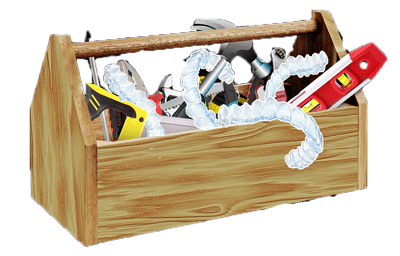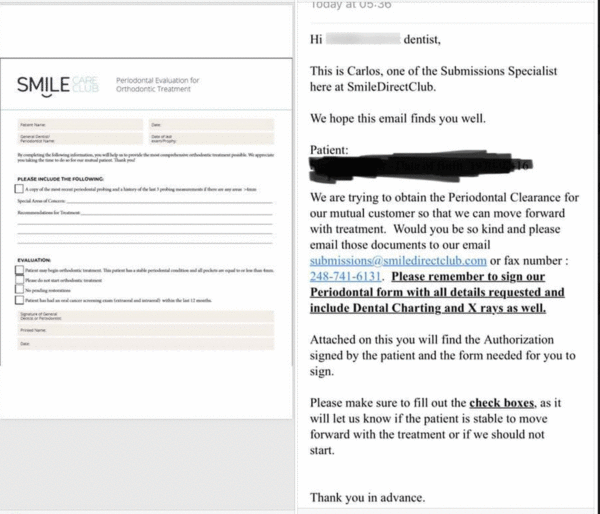 I wrote about DIY orthodontics not long ago. While it felt good to “unload” my feelings about DIY orthodontics, I had to admit to myself that it was unlikely we (dentistry) would stop this multi-billion dollar juggernaut. I figured it would meet its demise only if the market (consumers) eventually realized the folly of using their product. I confess I did not have much confidence in the market doing that any time soon (or later).
I wrote about DIY orthodontics not long ago. While it felt good to “unload” my feelings about DIY orthodontics, I had to admit to myself that it was unlikely we (dentistry) would stop this multi-billion dollar juggernaut. I figured it would meet its demise only if the market (consumers) eventually realized the folly of using their product. I confess I did not have much confidence in the market doing that any time soon (or later).
Now, there are some signs that the DIY ortho companies may just self-destruct. Recently, SmileDirectClub (SDC) went “public” with an IPO stock offering. Subsequently, there have been some reports of some rather interesting, if not questionable, activities and history of SDC. See the following articles:
- ‘Moving fast and breaking things in peoples’ mouths’: A research firm said SmileDirectClub has 85% downside just weeks after it notched the worst US IPO in 12 years (SDC)
-
SmileDirectClub: Moving Fast and Breaking Things in People’s Mouths – 85% Downside.
The first article is mostly a summary of the 2nd article, which is more than a little damning of SDC’s business practices. Rather, it is a full-on indictment of their business practices and even the legality of their business model.
A few of the highlights of the investigation done by Hindenburg Research: (Hover or click link to learn more about them.)
- SmileDirectClub’s practices have earned it over 1,200 Better Business Bureau complaints in just 5 years as a company. We communicated with one customer who was forced to use wire cutters to remove SDC products after he struggled to breathe. Review sites are replete with other horror stories of customers who had to take emergency dentistry into their own hands.
- We were told by a former SDC store manager that the company was sending 75 to 100 cases to one orthodontist’s phone, per day, to “crank out” case decisions.
- The company is another profitless, cash incinerating “unicorn” that we believe has significant added financial headwinds to face as a result of regulatory, legal and customer satisfaction liabilities.
- All told, we believe SmileDirectClub will wind up as a case study in why it’s a bad idea to invest in a company that attempts to fit a complex, dangerous medical process onto a low-cost, high volume assembly line.
- We see downside of 70% purely on a valuation basis, and downside of 85% given the above headwinds. We have a one-year price target of $2.
The above excerpts only scratch the surface. Read the (rather long) article. It is brimming with a litany of disturbing allegations.
But, if I was to emphasize the most telling and disturbing part of the report, it would be this:
-
Insiders and affiliates cashed out almost $700 million of $1.27 billion in total net IPO proceeds.
Think about what that last bit means and comment on it below!
Would you unwittingly endorse this product for your patients?
Several dentists have posted forms brought in by patients (from SDC) on social media. These forms ask the dentist to “certify” that the patient is clear for SDC “treatment.” I use quotes around that word, because it’s not treatment. It’s a medical device that is being sold directly to consumers.

Click on image to see larger version. It will open in a new browser tab. Then you can zoom (CTRL +). Oh, yeah… “our mutual CUSTOMER???”
My personal opinion: No way in hell I’d sign that form. I submit that any dentist who does may incur vicarious liability. You’d effectively be endorsing the so-called “treatment.”
Though, I have not yet encountered it, I expect it may create an awkward situation between doctor and patient. So, it may come down to weighing your professional integrity against your desire to keep the patient in your practice.
Edit to add (10/14/19): This article from CNBC today…
SmileDirectClub is now the worst unicorn IPO of 2019, down nearly 60% from its debut.
Shares of SmileDirectClub plummeted 12.9% on Monday after California Gov. Gavin Newsom signed a bill that protects consumers who use teledentistry products. Bill 1519, which he extended through January of 2024, gives the Dental Board of California oversight over all dental operations within the state.
The stock is now down almost 60% since it went public just over a month ago, making it the worst-performing IPO this year among companies that went public with a valuation over $1 billion.
 Copyright protected by Digiprove © 2019 The Dental Warrior®
Copyright protected by Digiprove © 2019 The Dental Warrior® 